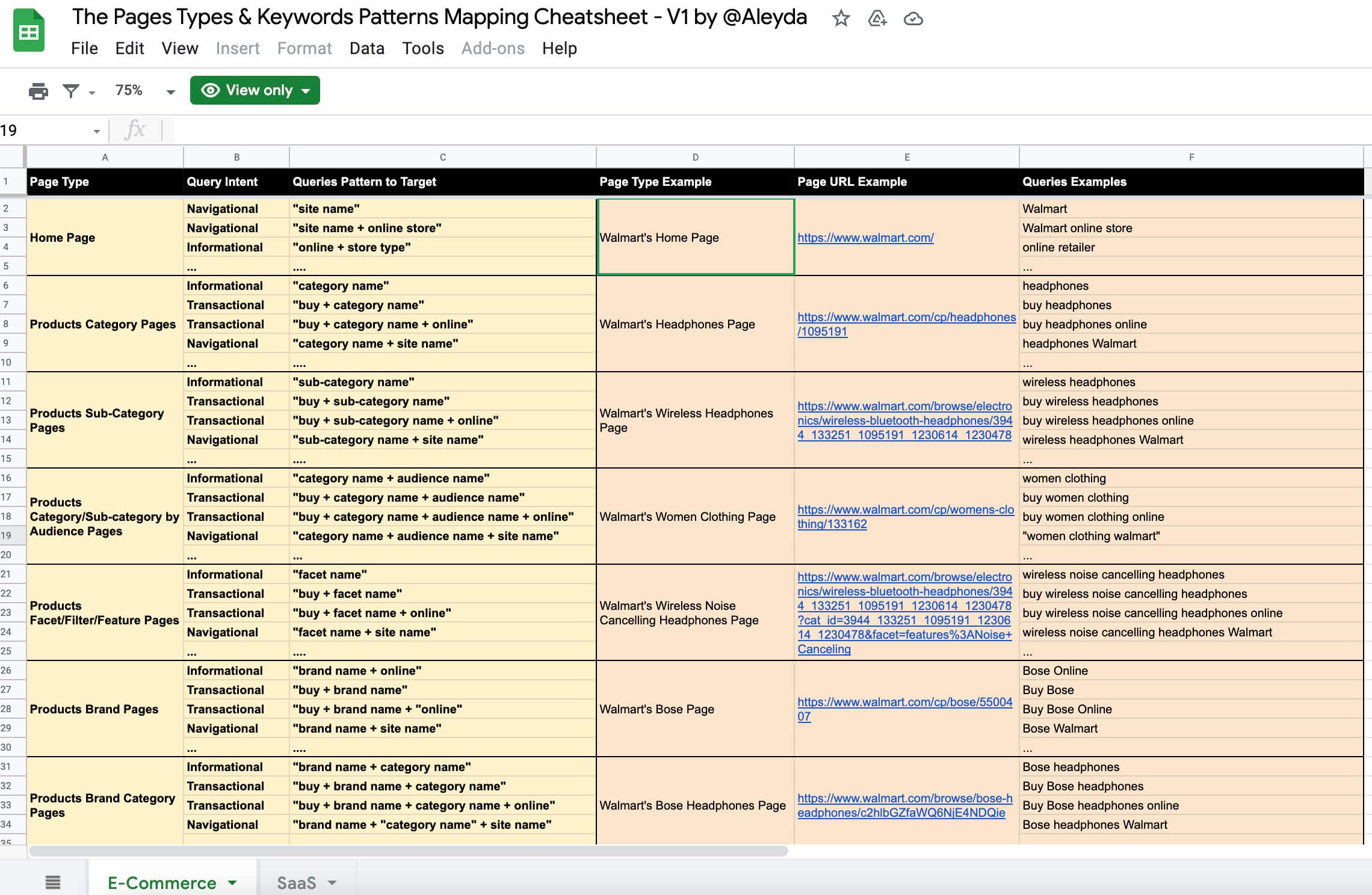Keyword mapping is one of those key (and unfortunately sometimes overlooked) activities when developing an SEO process, as by establishing what pages should rank for which keywords, it forces us to:
- Connect the identified popular and relevant queries to target with the page of the right “nature” to rank at that phase of the customer journey, the one that fulfills the intent of the user (eg: is it to research before buying, to directly buy once the decision is done or to look for support after buying?).
- Identify potential cannibalization issues we might have with many different pages of the same type that could be mapped with the same queries, allowing us to consolidate/clean and better align our Web structure for a more consistent experience and better chances to rank and give a better experience with our pages.
- Identify gaps within our Web structure and content, when we don’t have relevant pages of the right nature to target certain types of queries, allowing us to establish opportunities of new types of pages to create for them and better support the user journey and experience on the site.
- Identify gaps within our keyword research, and identify additional queries opportunities to rank for in our SEO process that we could be overlooking.
- Establish which are the key pages to prioritize within the SEO process execution, from a content, internal linking and technical perspective.
Because all of this, an effective keyword mapping can be key to set the focus and even the strategy to follow in the SEO process.
Last week the awesome Lidia Infante shared a very handy guide to develop a keyword mapping from scratch, including a keyword mapping template to facilitate the process, that I highly recommend you to check out.
There are also now SEO tools that can also help you to accelerate the process, like Keyword Insights, recently launched by Suganthan and Andy, that automates the keyword clustering, intent identification and helps you to check if you’re already ranking for too many different types of keywords with different intents with the same page.
However, even with these resources, keyword mapping can become time consuming when you start working in a new sector or a site with a different type of business model, in which you don’t have previous SEO experience, as the user journey will differ, the nature of the queries will also follow a different pattern as well as the sites Web structure and types of pages.
For example, in E-Commerce sites users will be looking for products types with characteristics as well as products types along brand names, for which you’ll have (and will map) facets and different levels of brand products pages.
On the other hand, these sort of pages won’t exist on SaaS sites, where users will be looking for products by their needs/features for their type of business for which you’ll have (and will map) products by audience industry and size pages, as well as how to switch/move from other products, for which you’ll have a “how to switch from another product” page.
This is why to make sure I don’t leave anything out with the different types of sites I work with and to help me to advance quicker in the keyword mapping process, I’ve created “keyword mapping cheatsheets” for different type of sites I work a lot with, like E-Commerce, SaaS and localized services (food delivery or car rental).
These keyword mapping cheatsheets include the different types of pages, as well as the queries patterns each of these types of sites pages tend to target, along their “main” intent, including examples of well known sites, to quickly spot if there’s a keyword mismatch in the sites I’m working on, or if there’s an important page type missing from the Web structure.
Today I would like to share with you two of these keyword mapping cheatsheets (which I’ve updated/cleaned-up a bit for public consumption) for two popular types of sites: E-Commerce and SaaS, that you can find below, as well as a Google Sheets at the bottom that you can copy. Depending on the reception they have, I’ll be happy to share more for other types of sites too!
Copy the E-Commerce & SaaS Keyword Mapping Cheatsheets in Google Sheets format
I’ve also created these “cheatsheets” to map keywords with the different and most common type of pages in E-Commerce and SaaS sites in Google Sheets so you can easily copy! Grab the Google Sheet here, and copy it by going to “File” > “Make a Copy”.
E-commerce Sites Keyword Mapping Cheatsheet
This cheatsheet features the different types of pages of e-commerce sites along the usual queries patterns for which they will be mapped, including their main intent. Examples of popular e-commerce sites (Amazon, Walmart) pages and queries have been included to make it easier to see how it can be applied in yours.
SaaS Sites Keyword Mapping Cheatsheet
This cheatsheet features the different types of pages of SaaS sites along the usual queries patterns for which they will be mapped, including their main intent. Examples of popular SaaS sites (Salesforce, Hubspot, Atlassian, Monday) pages and queries have been included to make it easier to see how it can be applied in yours.
Do you find the keyword mapping cheatsheets useful? Share and let me know!
I have a few more of these so if you find them useful, let me know over twitter, and I’ll be more than happy to release them too! Also, don’t forget to share them and spread the love 🙂
